
Mandriva Linux is a discontinued Linux distribution developed by Mandriva S.A.
In computing, a desktop environment (DE) is an implementation of the desktop metaphor made of a bundle of programs running on top of a computer operating system that share a common graphical user interface (GUI), sometimes described as a graphical shell. The desktop environment was seen mostly on personal computers until the rise of mobile computing. Desktop GUIs help the user to easily access and edit files, while they usually do not provide access to all of the features found in the underlying operating system. Instead, the traditional command-line interface (CLI) is still used when full control over the operating system is required.
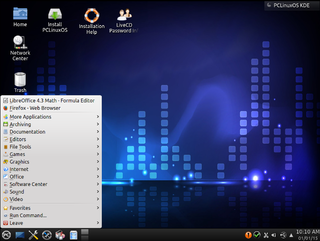
PCLinuxOS, often shortened to PCLOS, is an x86-64 Linux distribution, with KDE Plasma Desktop, MATE and XFCE as its default user interfaces. It is a primarily free software operating system for personal computers aimed at ease of use. It is considered a rolling release.

SUSE Linux Enterprise Desktop (SLED), introduced as Novell Linux Desktop, is a Linux distribution supplied by SUSE and targeted at the business market. It is targeted for desktops. New major versions are released at an interval of 24–36 months, while minor versions are released every 9–12 months. SUSE Linux Enterprise products, including SUSE Linux Enterprise Desktop, receive commercial support and much more intense testing than the openSUSE community product, with the intention that only mature, stable versions of the included components will make it through to the released enterprise product.
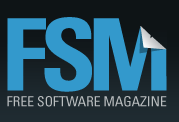
Free Software Magazine is a Web site that produces a mostly free-content online magazine about free software.
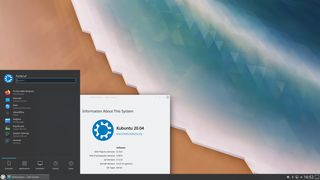
Kubuntu is an official flavour of the Ubuntu operating system that uses the KDE Plasma Desktop instead of the GNOME desktop environment. As part of the Ubuntu project, Kubuntu uses the same underlying systems. Every package in Kubuntu shares the same repositories as Ubuntu, and it is released regularly on the same schedule as Ubuntu.

TrueOS was a Unix-like, server-oriented operating system built upon the most recent releases of FreeBSD-CURRENT.
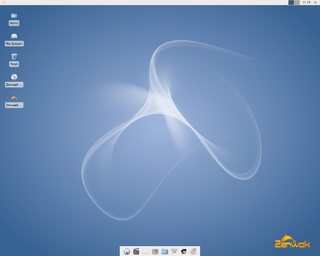
Zenwalk is a Desktop focused Linux distribution founded by Jean-Philippe Guillemin. It is based on Slackware with very few modifications at system level making it 100% compatible with it. Zenwalk aims to be a modern and multi-purpose Linux distribution by focusing on Internet applications, multimedia and programming tools. Additionally, Zenwalk comes with many specialized tools, designed for beginner through advanced users as it offers system configuration via both graphical and command-line operations.
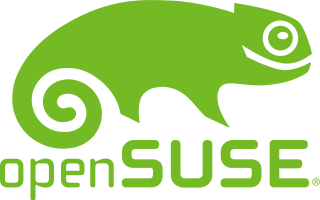
openSUSE, formerly SUSE Linux and SuSE Linux Professional, is a Linux distribution sponsored by SUSE Software Solutions Germany GmbH and other companies. Its "Leap" variant shares a common code base with, and is a direct upgradable installation for the commercially-produced SUSE Linux Enterprise, effectively making openSUSE Leap a non-commercial version of the enterprise product. It is widely used throughout the world. The focus of its development is creating usable open-source tools for software developers and system administrators, while providing a user-friendly desktop and feature-rich server environment.

GNOME Keyring is a software application designed to store security credentials such as usernames, passwords, and keys, together with a small amount of relevant metadata. The sensitive data is encrypted and stored in a keyring file in the user's home directory. The default keyring uses the login password for encryption, so users don't need to remember yet another password.
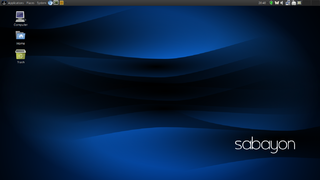
Sabayon Linux or Sabayon, is a Gentoo-based Italian Linux distribution created by Fabio Erculiani and the Sabayon development team. Sabayon follows the "out of the box" philosophy, aiming to give the user a wide number of applications ready to use and a self-configured operating system.
A desktop environment is a collection of software designed to give functionality and a certain look and feel to an operating system.

dwm is a dynamic, minimalist tiling window manager for the X Window System that has influenced the development of several other X window managers, including xmonad and awesome. It is externally similar to wmii, but internally much simpler. dwm is written purely in C for performance and security in addition to simplicity, and lacks any configuration interface besides editing the source code. One of the project's guidelines is that the source code is intended to never exceed 2000 SLOC, and options meant to be user-configurable are all contained in a single header file.

Fedora is a Linux distribution developed by the community-supported Fedora Project which is sponsored primarily by Red Hat, a subsidiary of IBM, with additional support from other companies. Fedora contains software distributed under various free and open-source licenses and aims to be on the leading edge of free technologies. Fedora is the upstream source of the commercial Red Hat Enterprise Linux distribution.

Lubuntu is a lightweight Linux distribution based on Ubuntu, using the LXQt desktop environment in place of Ubuntu's GNOME desktop. Lubuntu was originally touted as being "lighter, less resource hungry and more energy-efficient", but now aims to be "a functional yet modular distribution focused on getting out of the way and letting users use their computer".
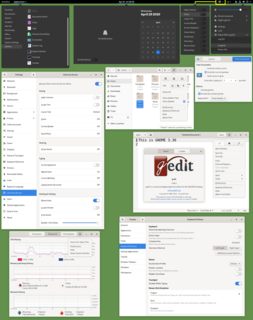
GNOME is a free and open-source desktop environment for Unix-like operating systems. GNOME was originally an acronym for GNU Network Object Model Environment, but the acronym was dropped because it no longer reflected the vision of the GNOME project.

Manjaro is a free and open-source Linux distribution based on the Arch Linux operating system. Manjaro has a focus on user friendliness and accessibility, and the system itself is designed to work fully "straight out of the box" with its variety of pre-installed software. It features a rolling release update model and uses Pacman as its package manager.
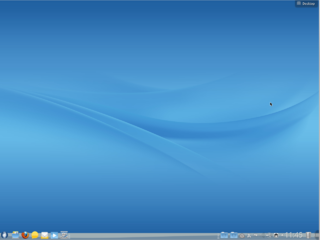
ROSA Linux is a Linux operating system distribution, developed by the Russian company 'LLC NTC IT ROSA'. It is available in three different editions: ROSA Desktop Fresh, ROSA Enterprise Desktop and ROSA Enterprise Linux Server, with the latter two aiming at commercial users. Its desktop editions come bundled with closed-source software such as Adobe Flash Player, multimedia codecs and Steam.

BackSlash Linux is an Ubuntu and Debian-based operating system developed in India by Kumar Priyansh for AMD64 and Intel x64-based personal computers. It is based on free software and every release of the operating system is named after the characters of the Disney film franchise Frozen. Since the third major release, BackSlash Linux Olaf, BackSlash Linux has used its own custom version of KDE, called the BackSlash Shell, as the default user desktop.
















